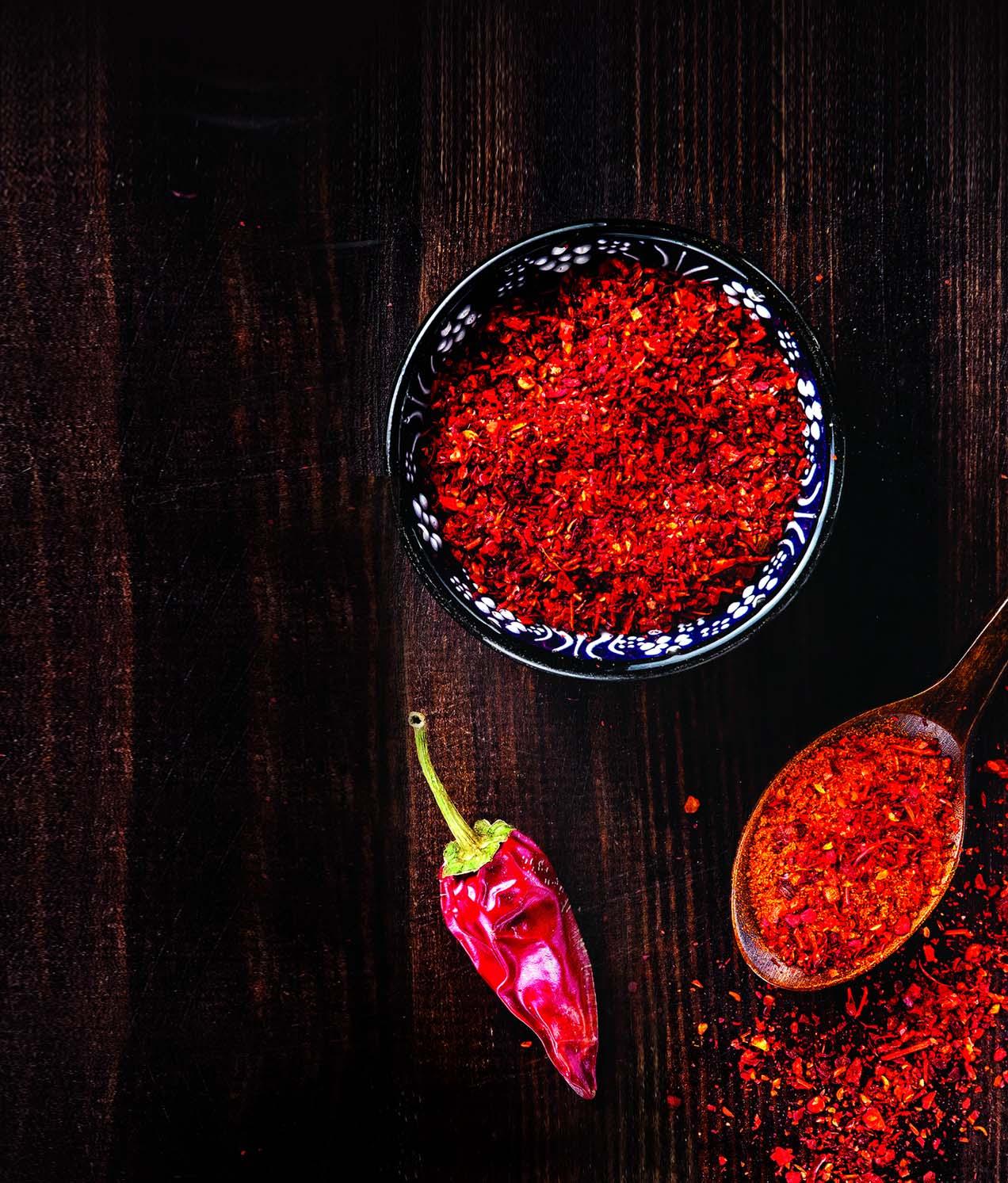
26 minute read
32
INDIA'S FOOD PROCESSING SECTOR: COMING OF AGE
India's move to allow 100 per cent FDI in food processing,has already attracted US$ 463.44 million in the first half of the current fiscal and is expected to reach upto US$ 1200 million by end of the year.In this AAHAR Special,we take a look at some of the growing players in this sector
Dr Prabodh Halde, chairman - West Zone, All India Food Processors’Association (AIFPA) speaks to Steena Joyabout the growing FDI in the country's food processing sector and why the industry needs priority status because of its potential to improve farmer welfare and employment generation
India has received foreign direct investment (FDI) of USD 463.44 million in the food processing sector in the first half of the current fiscal. Your comments.
Yes, India has already received US$ 463.44 million as FDI in the food processing sector in the first half of the current fiscal year and this amount is up 40 per cent compared to the same period last year. During last fiscal year India received a total of US$ 904.90 million and thus it is expected that this year the inflow will reach upto US$ 1200 by end of the year. This is very good news since when other sectors are not performing, food processing sector has received such a great investment and which will help overall growth of the sector and farmer’s welfare. This has happened due to positive step of the Indian government to allow 100 per cent FDI in this sector. It will help in capacity development, infrastructure development and employment generation in the sector.
The role of the government in driving investment to the sector?
The government has rolled out several initiatives to drive investment to this sector, like the flagship Scheme for Food Processing & Preservation Capacities (CEFPPC) under the
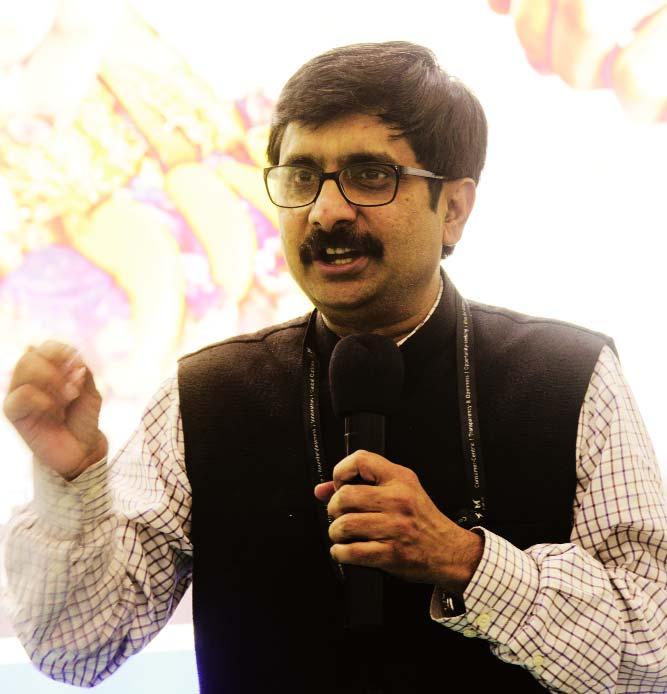
Dr Prabodh Halde
GOVERNMENTINITIATIVES
National Horticulture Board scheme for cold storage
Setting up of cold storage (of capacity above 5000 MT and up to 10000 MT) and their modernisation are eligible for assistance under the NHB Scheme of capital investment subsidy for construction/ expansion/ modernisation of cold storage for horticulture products (a sub scheme under MIDH). It is open ended credit linked scheme with scale of assistance @ 40 per cent of capital cost of project limited Rs 30.00 lakh per project in general area and 50 per cent limited to Rs 37.50 lakh per project in case of NE.
National Horticulture Mission (NHM)
Cold storage (long term storage and distribution hubs) up to 5000 MT capacity are eligible for assistance under the open ended scheme of NHM/ HMNEH (a sub scheme of MIDH). The assistance is extended as subsidies to credit linked projects @ 35 per cent of capital cost of project in general area and 50 per cent in case of hilly and scheduled areas.
Small Farmer Agri-Business Consortium (SFAC) assistance to cold storage
Setting up of cold storage as a part of a integrated value chain project are eligible for subsidy provided the cold storage component is not more than 75 per cent of total financial outlay. The scale of assistance as subsidy to projects is @ 25 per cent of capital cost and maximum ceiling to Rs 2.25 crore in general area and 33.33 per cent and maximum ceiling up to Rs 4 crore in case of NE, hilly and scheduled area.
Agricultural and Processed Food Products Export Development Authority (APEDA) assistance for cold chain
Setting up of cold chain are assisted by APEDA as a part of strategy to develop the industries relating to the scheduled products for export. The scale of assistance as 40 per cent subsidy subject to a limit of Rs 75 lakh for cold chain projects with mechanised handling system.
Food Processing Unit
Under Horticulture Mission For North Eastern Region and Himalayan States (HMNEH) a sub scheme of MIDH, food processing units for horticulture products are extended credit linked back ended capital investment assistance of 50 per cent of project cost (ceiling amount of project cost is Rs 8 crore) in J&K, Himachal Pradesh and Uttarakhand.
Venture Capital by Small Farmer Agri-Business Consortium (SFAC)
SFAC extents venture capital assistance in form of equity to agribusiness projects. The quantum of SFAC support is 26 per cent of promoter’s equity or amount of Rs 50 lakh whichever is lower in general area and 40 per cent of the promoter equity or amount of Rs 50 lakh whichever is lower in hilly and NE regions. This venture capital is repayable to SFAC after the repayment of term loan.
Pradhan Mantri Kisan Sampada Yojana (PMKSY). The Pradhan Mantri Kisan Sampada Yojana (Scheme for Agro-Marine Processing and Development of AgroProcessing Clusters) with an allocation of Rs 6,000 crore for the period 2016-20, is a comprehensive package which will result in creation of modern infrastructure with efficient supply chain management from farm gate to retail outlet.
It will not only provide a big boost to the growth of food processing sector in the country but also help in providing better returns to farmers and is a big step towards doubling of farmers income, creating huge employment opportunities especially in the rural areas, reducing wastage of agricultural produce, increasing the processing level and enhancing the export of the processed foods.
The following are implemented under PM Kisan Sampada Yojana:
● Mega Food Parks ● Integrated Cold Chain and Value Addition Infrastructure ● Creation/ Expansion of Food Processing/ Preservation Capacities (Unit Scheme) ● Infrastructure for Agroprocessing Clusters ● Creation of Backward and Forward Linkages ● Food Safety and Quality Assurance Infrastructure ● Human Resources and Institutions ● Operation Greens.
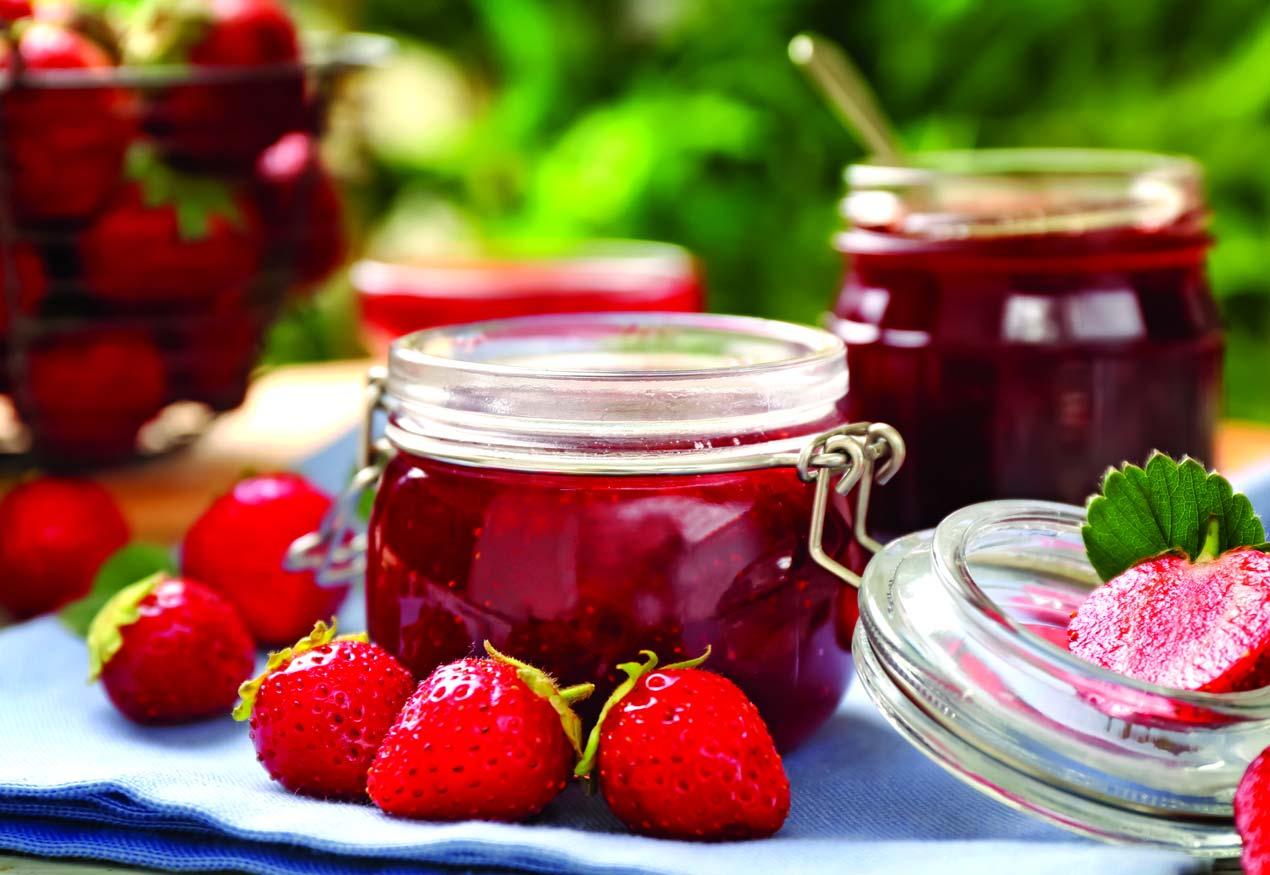
The need for upgrading India's cold chain infrastructure.
As we know post-harvest fruits and vegetable losses in India are in tune of 20 to 30 per cent and cold chain infrastructure is a must for reducing the wastage and for value addition of products. The government has many schemes to promote cold storage development and it's very important for product value addition.
New initiatives by All India Food Processors Association?
All India Food Processors Association is helping the Ministry of Food Processing (MOFPI) to make their various schemes popular and also helping our members in resolving various issues in area of food processing. We are also supporting FSSAI for various eat right initiatives for consumer safety. Organic, natural, traditional food are some key trends and areas which our association is focusing on. We are also focusing on innovation development and students participation. We believe that the Indian food processing sector should focus on more value addition and that this sector can solve many problems relating to farmer welfare.
Apart from promoting the food processing sector in the North East, which other regions have the potential to be developed as food processing hubs? Apart from the North East, all hilly regions like Uttarakhand, Himachal, Jammu and Kashmir are potential areas due to raw material availability. Actually entire India needs to set up food processing hubs since processing should be close to market and many small and medium processing units should be encouraged for more employment generation. As said earlier, the more we process, the better it is for the farmer and for employment generation. This sector creates over 10 jobs per one crore invested. For other sectors, job generation per one crore investment is less than two. So for a populous country like India, both for farmer welfare and employment generation, the food processing sector should be given priority status and the government should bring more schemes all across the country.
Evolution of food processing industry in India The industry has grown exponentially over the last 20 years. The quality of processed

food has seen a significant improvement in these past 20 years. Starting from raw basic commodities like sugar, oils and wheat, all these foods are coming
CREMICA FOOD INDUSTRIES AKSHAY BECTOR, CMD
processed these days with quality control systems in place to check and maintain highest nutritional standards of the product. The process is getting more streamlined and error-free year on year. Also with the changing needs of the consumer, the producers are tweaking their products accordingly. What has indeed been revolutionary is that more and more food processing companies are able to process food products suiting the Indian market, considering the palate of the consumers and also packaging keeping in mind the tropical climate of the country. Homegrown companies have been able to bring in packaged products that keep all the extreme conditions of the climate, temperature, and humidity in mind. It is evident by the fact that the processed milk sector is dominated by homegrown brands despite the presence of international brands here. Noting that the products are going to be stored for a long period of time in the kitchens, the sauces and mayonnaise need to be prepared in a way that their shelf life longevity is fair enough. Companies like ours have been able to answer that need.
USP of your products
Our foremost USP is that all our products are well suited for the Indian palate and climate conditions. We have been the pioneers in the global market to research and develop vegetarian variant of mayonnaise back in 1996. Over a period of five years, the product was designed to suit the local markets. The ketchup has also been designed keeping the Indian palate and shelf life in mind.
Future roadmap
We are the market leaders in sourcing liquid condiments to the restaurant space in India. Last year we launched many products in association with foreign companies. We launched a range syrups while in association with a French company for bringing the best flavours in the world. We have also recently launched flat breads and pastas. We also developed solutions of ready made sauces for specialty Chinese restaurants. Cremica over the years has developed a wholesome range of products. Every year our portfolio becomes bigger and bigger. We have already crossed 300 crore in turnover and are looking to continuously grow in this year by 20 per cent despite of the tough conditions in the market.
INTERGROW BRANDS ASHOK MANI, MD & CEO

Evolution of the food processing industry
When disposable income increases, our allocation of spends tend to show a steep increase towards the different types of foods that we are wanting/willing to try. This need to try new tastes, flavours and palate is being one of the reasons why the food industry has evolved so much over the last decade. While the industry was grappling with distribution challenges, shelf life was the main focus. But, as customer got conscious of health, products with high preservatives, etc., were looked down upon. This forced the industry to look for options to have shorter time lag between production date and customer. This evolved into products made with newer technology of retorting, hot filing, sterlisation, etc. As distribution efficiency increased and cold chain improved, the ability to produce products of higher quality further increased. High pressure pascalisation and other such technologies made possible fresh juices to be sold in FMCG packs. The consumer no longer wanted pulp or synthetic flavour. so with consumers wanting newer tastes, distribution formats changing, evolution of packaging, we have seen a shift in food processing. All of these work hand in hand to drive the industry to new innovations.
USP of your products
Technology is at the forefront of all that we do. We are the first company to launch tea extracts in powdered and soluble form. We process tea leaves within six hours of plucking them and through our unique cold crafting process, convert it into soluble powder.
Not only is the product more convenient and tastier but retains maximum goodness that’s present in tea leaves.
Future roadmap We intend to give new experiences and tastes to the Indian consumer. People are looking for a change but brands haven’t taken the leap of faith. We hope to be different and drive this as the core fundamental behind which we will launch all our products.

Evolution of food processing industry in India The food processing industry is one of the largest industries in India. It ranks fifth in terms of production, consumption, and exports. Food processing has a key role to play in linking Indian farmers to consumers in both
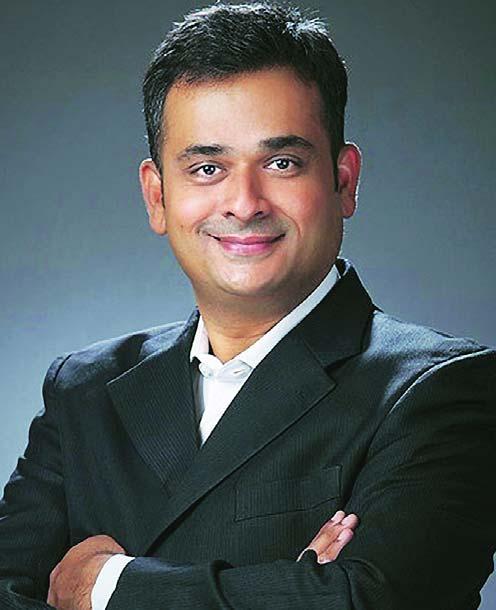
domestic and international markets. The Ministry of Food Processing Industries (MoFPI) is making huge efforts to encourage investments across the value chain. The industry engages approximately 1.85 million people in around 39,748 registered units with fixed capital of US$ 32.75
LAVAZZA INDIA JAI GANESH RAMNATH, MANAGING DIRECTOR
Evolution of the food processing industry
The Indian food industry has developed as a profit-making sector due to its enormous potential, particularly within the food processing industry. Earlier, food processing was largely restricted to preservation, packaging and transportation. However, over the years with emerging trends and technologies, the sector has broadened its possibilities. It has started producing many new items like ready-to-eat food, beverages, processed and frozen products. In terms of coffee, the industry has been growing steadily. The trends show that millennials are becoming accustomed to fresher trends in coffee. The per capita is still low, but we at Lavazza India focus more on educating people on coffee and believe in giving the best coffee experience.
USP of your products
We have mastered the art of blending and continuously attempt to satisfy every profile with varieties of coffee. Additionally, due to a great pull from the market for organic and sustainable blends, we launched Lavazza Alteco which represents a blend of origins from uncontaminated mountain plantations that practise organic farming and respect the principles of environmental sustainability which has been our key USP. This indeed helps us to stick to our commitment towards the environment and make conscious efforts to achieve it.
Future roadmap
We mainly emphasise on the HORECA segment. In a low coffee penetrated country, it plays a big role in creating appeal in this category. We will be in the forefront to cultivate this through consistent coffee education. We plan to invest more in our training centres to spread knowledge associated with coffee.
KAGOME FOODS INDIA ROHIT BHATLA, MANAGING DIRECTOR
billion and aggregate output of around US$ 158.69 billion. Major industries constituting the food processing industry are grains, sugar, edible oils, beverages, and dairy products.
Focusing specifically on tomato processing, India is the second largest producer and consumer of tomatoes in the world with a production of 20 million tonnes. It is ready for large investments across food supply chains. Processed tomato products account for less than one per cent of India’s total consumption of tomatoes, presenting a huge opportunity to Kagome Foods India, while in the US the processed tomato consumption is in excess of 75 per cent.
The food processing sector has enormous potential to propel all round development, given its entire footprint across agriculture, industry and services. It can lead to gainful employment opportunities and put purchasing power in the hands of the people in both rural and urban regions.
USP of your products ● Seed to table value chain - Only company with a presence in the end-to-end value chain, from seed to table. Kagome’s wholly owned subsidiary (seed) company, supplies specialised, tested and approved seeds to farmers in Nashik, who grow them under the expert guidance of our agronomy teams. Our agronomists impart guidance to farmers to grow high yield, high-quality tomatoes at a low cost. These juicy tomatoes are harvested only when they are fully ripened, sorted and crushed in state-ofthe-art plants customised for processing tomatoes. ● Global quality at local prices - Our rigorous quality controls, ensure safety and reassurance, enabling us to offer global quality products at local prices. ● Preservative free portfolio - Our entire product range is preservative free, with no artificial flavours or colours. ● Japanese technology - In India, the norm is to process tomato products on the mango line. However, Kagome has made significant investments in factory infrastructure, to customise our processing line for tomato-based products, to make them better suited for use in restaurants.
Future roadmap ● Increase farmer partners under our Contract Farming Program, from 200 (presently) to 1,000 ● Expand our distribution reach from our existing markets of Mumbai, Delhi NCR, Bengaluru and Pune, to cover the top 10 foodservice markets in India ● Expand our product range, to focus on a wider range of tomatoes and onion-based products ● Further investments in value chain and factory infrastructure.
Vedic, the new restaurant at Westin Rajarhat Kolkata offers guests an holistic dining experience that supports local farmers and introduces the palate to ancient grains and home style cooking. Chef Vivek Kalia, executive chef, Westin Rajarhat Kolkata, explains the USP of the restaurant and how the menus are curated
What was the inspiration behind Vedic?
Vedic can be said to be the backbone to the F&B at Westin Rajarhat Kolkata. We find the essence of the vedas in the inscriptions and shlokas on each floor of the hotel from the 11th to the 31st. The thought process of the owner Mr Kanoria has been on the basics and thought process of the vedas, and signifies the real essence of back to the roots. The menu has been curated by celebrity chef Ajay Chopra bringing in the four pillars of Seasonality, Regionality, Home Food and Tradition through a fusion of flavours and modern presentation aiming at the overall holistic wellness.

What is the USP of the restaurant?
The USP of the restaurant is the whole experience which has been thoughtfully articulated keeping in mind the ingredients and the evolution of the plated Indian food - the regionality, seasonal produce, homestyle cooking and back to the roots principles.
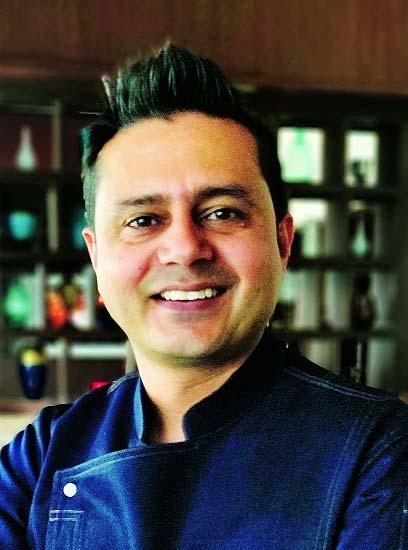
How are the menus curated? Where are the ingredients sourced from? Tell us about the hydroponic garden inside the restaurant?
The menus are carefully designed keeping in mind the regional amalgamation of various Indian cuisines,seasonal produce keeping in mind a very sustainable Chef Vivek Kalia
approach, home style fundamental of cooking techniques and back to the roots principles. The idea is the evolution of food keeping in mind these


DINING WITH THE GM S
Recently Westin Rajarhat Kolkata and Express Food & Hospitality hosted a dinner for general managers of leading hotels in the City of Joy at Nori, the hotel's Pan Asian restaurant. Esteemed guests included Debashis Brahma, DOSM, Holiday Inn Kolkata; Sandeep Basu,Area GM, Cygnett Hotels & Resorts; Shubhash Sinha, GM, Westin Rajarhat Kolkata; Abhishek Sachdev, Hotel Manager, Faifield by Marriott Kolkata; Jameson Solomon, GM, Swissotel Kolkata; Mukesh Verma, GM, Lemon Tree Premier - Kolkata; Michael Hawkins, Counsellor (Agriculture & Agrifood) & Senior Trade Commissioner, High Commission of Canada; Chef Michael Swamy; Chef Gautam Chaudhury and Chef Uttam Gomes.


principles. The sourcing of ingredients is local, sustainable and organic and as fresh as possible. Straight from the farm to the table, regional organic produce to give the best available seasonal vegetables and offering unheard grains to the customer, all these principles are always in our minds.
The hydroponic garden at the highest point in the city is a addon asset to the restaurant. The produce is used in the menu to add aroma and health benefits to the carefully curated selection.
Why choose Kolkata for Vedic?
With growing interest in vegetarian cuisine Kolkata is the perfect place for the a restaurant as unique as Vedic.
What has been the response from guests? We have received a spectacular response from our guests for the experience and the moments we create at Vedic. It's a combination of food ,style, presentation and drama.
Sustainability at Vedic
The maximum produce we use at Vedic is purely organic and the inclination is for the support of local farmers.
Be it ghee or cold pressed oil or vinegar or the grains - the idea is to support the farmers and bring the best produce straight to the customer's plate.




D.A.T.A by design
Nestled deep in the woods of the Sahyadri Range, Della Adventure Training Academy (D.A.T.A) by the Della Group is a one-of-its-kind military themed luxury camping resort aiming to converge military self-defence awareness with exuberant hospitality. Akshay Nayak checks out the design elements that make it an experiential hospitality product
World over, international hospitality companies vouch on providing money-can't-buy experiences to their patrons by increasingly striving to thin out the predominant line distinguishing "in-house" and "outside of the hotel" experiences. One such element that enlivens the spirit of the hotel/resort are the sleek brushes of design, inevitably kindling a “tale to tell” in every inch, from artefacts to installations.
Not restricting only to the hospitality industry, design plays a crucial role in defence for various activities. Right from natural navigation techniques by locating constellations, to sending SOS alerts seeking help using design, to formation of sublime regiments at national events, etc. Marrying the application of design in hospitality with defence, Jimmy Mistry, chairman & MD, Della Group, conceptualised the country's maiden military-themed glamorous camping resort - Della Adventure Training Academy (D.A.T.A) in Lonavla, Maharashtra.
After what he had faced during his brief visit to The Taj Hotel in Mumbai just a few hours ahead of the Mumbai terror attacks in 2008, Mistry had one aim - to keep the citizens of the country informed and trained to deal with any unforeseen natural/man-made crises like terrorism. The resort pays homage to the martyred soldiers of the country and offers self-defence training to the guests at D.A.T.A.
Luxury amidst the woods
Nestled deep into the woods of Sahyadri Range, D.A.T.A is an hour-long dirt track drive from Della Resorts in jeeps with military camouflage, giving guests a feel of the experience that awaits them. This is followed by a 10-minute pontoon ride across the Shirota lake, manned by retired Indian Army personnel. On arrival, there is a welcome by horse salute and a memorial service for martyrs. Each villa in the 27-villa property offers bestin-class amenities with a hint of military-themed artefacts placed throughout.
Showcasing glass table tops resting on machine gun replicas, to the artificial bullhead taxidermy and grenadestyle doorknobs, a villa at D.A.T.A can accommodate four pax and comes equipped with a jacuzzi pool and twin king-sized beds, ensuring absolute opulence.
Keeping in mind the nittygritty of the military touch while ensuring sustainability in the property, D.A.T.A is built by refurbishing cargo containers stacked and designed to blend in with the backdrop of mountains and forests. Salaam Manekshaw - the multi-cuisine restaurant at the resort named after India's famous field marshal, has pictures from Indian Army's various regiments across the walls. Chef Shahnawaz, heading the culinary operations at D.A.T.A ensures that the guest's tastebuds are satisfied, be it over the Indian succulent fish preparations in the night, or the wholesome

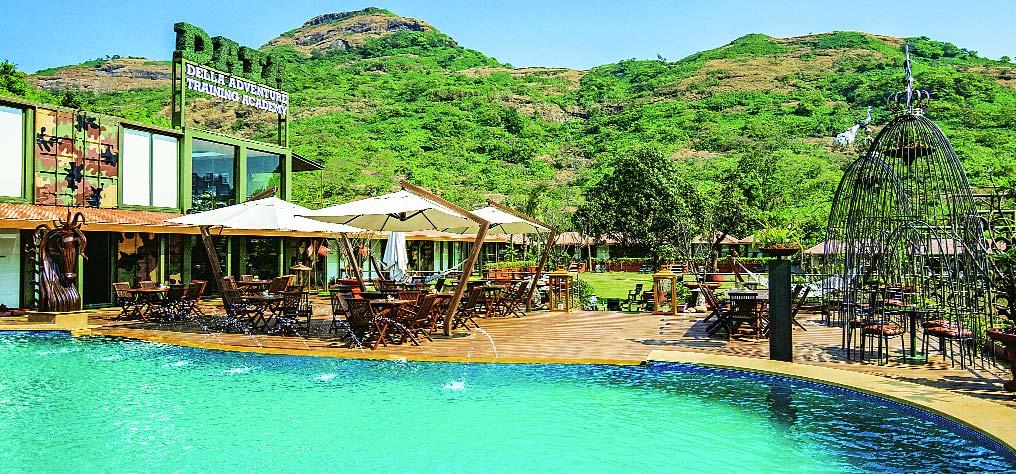
Continental breakfast in the morning. The guests can also keep gazing at the stars while immersing in the outdoor pool right under the sky, or watch the chefs preparing dishes live from the Gurkha Lounge next to the souvenir store and spa. Ideal for corporate events, D.A.T.A offers an indoor banquet space - Maratha, which too comes equipped with modern equipment.

The centrestage
The military obstacle Jimmy Mistry
course in the property along with the team of Lt. General Raymond Noronha (Retd.) - past Chief of Staff Southern Command and Col. Milind Patwardhan, take the centrestage wherein men of valour from the various defence verticals, who served for the country, share real-life experiences and techniques with guests to prepare them for unforeseen calamities.
The team of these experts ensures that each guest returns with dynamic learning about survival, endurance in extreme conditions and a sense of patriotism deeply embedded in their psyche. For this, they have devised interesting activities like Hell Night, nature walk, flag hoisting ceremony, knowledge sessions, and obstacle course drill. The Hell Night includes practical sessions of locating directions with the help of heavenly bodies like the Sun, Moon, Constellations, etc.
"We also train the guests for survival like identifying edible and non-edible flora and fauna in the woods, creating SOS signs using fire lit in a particular design/ pattern, etc. Flag hoisting every morning, with the guests dressed up in uniform in itself kindles a sense of patriotism in them. The obstacle course is thoughtfully planned to get the guests accustomed to how to put their muscles to do the thinking subconsciously when faced with any situation,” informed Col. Patwardhan.
Bringing many other experiences such as designing special types of knots using battle ropes for various rescue operations, to creating makeshift containers and cooking vessels from bamboo, the men of action at D.A.T.A ensure that 'design' as a keyword is exuded in its best iteration at every nodal point of the guest experience.
The rightful convergence of military skills with opulent hospitality, based on design as the tasteful element makes D.A.T.A an ensemble of the country's one-of-its-kind experiential hospitality product.


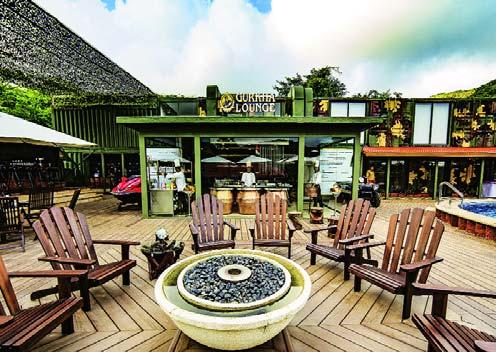




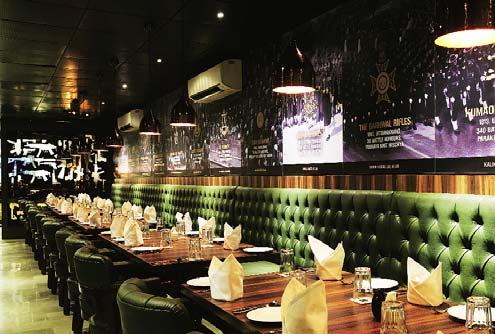
Claiming to be one of the most preferred Single Malt Whisky labels across the world by value and volume, Angad Singh Gandhi, brand ambassador, Glenfiddich India, speaks with Akshay Nayak about the brand's focus on future experiment-driven drinking experience to increase its popularity in the country
What does the current pattern of whisky consumption in India show?
People are getting increasingly choosyt when it comes to their drinks nowadays. In terms of whisky, the trends in the markets are slowly changing wherein over the past two years, people are slowly showing a leaning towards Single Malts now, over the long-existing Scotch Whisky. The growth has been in double digits and we expect the same growth this year as well irrespective of the impact of the economic slowdown. Also, old charms are claiming their name of honour again, like an Old Fashioned, about five years ago was obsolete, but now is the leader in the art of cocktails. India as a market still wishes to pay an extra buck when it

Glenfiddich to us through these collaborators. We did the programme in India from 2015 till 2018, but we are devising a new dynamic bartending programme for the country which shall be unveiled in the second half of this year.
Angad Singh Gandhi
comes to new experiments with their drinks.
With many competing labels brewing in India, how does Glenfiddich keep its name high as the go-to whisky in India?
The market will always have too many options. Even in a restaurant, there are different categories of spirits that are offered in cocktails which predominantly used the only whisky. However, the choice remains with the consumer depending on their palate. For Glenfiddich, we know that our consumer is well-educated in whiskies. We are going to create an experi

ential series for our consumers. We are experimenting a lot when it comes to looking at the pattern of consumption of whisky for all age groups. We are finding ways to promote how Glenfiddich is versatile in its palate suitability to all the age groups right from millennials to the young at heart. We are of course pairing cuisines from the world over for the same, but we are also creating music and art evenings, to evolve our consumers to enjoying whisky on all occasions. In 2019, we did the Glenfiddich Experiments, in which we had noticed in India as a pattern that here, still, people have their Single Malts stiff. For this, we had sourced specially made elixirs using local ingredients from the length and breadth of the country and paired them with 12- year-old Glenfiddich, which turned out to be excellent.
How does Glenfiddich promote the artists behind the bar?
Since the last five years, Glenfiddich has been conducting its bartenders' challenge called the World's Most Experimental Bartender. We also believe that experimentation is the way ahead. We believe it is our responsibility to evolve the consumer. In the programme, the bartenders collaborate with a collaborator who can be anyone like a chef, magician, designer, so on and so forth. The bartender then presents his signature cocktail made with What is the potential in tier II and III markets for Glenfiddich?
We have seen huge growth and increasing numbers of Glenfiddich aficionados from the tier II markets, but not as much from the tier III cities as yet, which is subject to the distribution of our products there. Glenfiddich is very renowned and well known when it comes to consumer awareness. In 2019, I had flown to 30 tier II cities in India to promote Glenfiddich because that is where major growth in numbers is coming for us. In 2020, our key focus would be on further spreading out our distribution avenues to these markets. Reiterating that as a brand we believe in experimenting, we have proven it to be successful with more feminine and younger audiences opting for Single Malts, especially Glenfiddich now. We have recently launched the Glenfiddich Grand Cru which is specifically for celebratory occasions. It is a 23-year-old Glenfiddich finished in French casks - which are used to age sparkling wines and champagnes.








